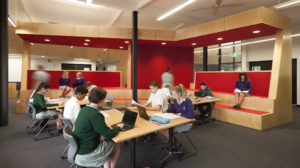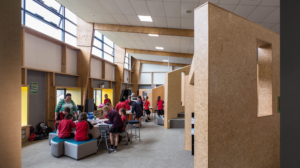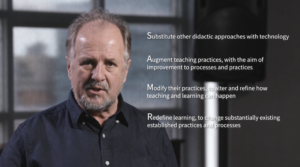| Introduction | Wayfinding activity | Spatial Transition Pathway | Spatial transition case studies | Spatial transition resources |
Spatial typologies
ILETC’s Spatial Typologies focus on five key areas—design of space, pedagogy, furniture, digital technology and acoustics—that teachers need to have a good understanding of in order to develop the knowledge and skills to effectively use innovative spaces. The typologies have been refined to their simplest forms to be demonstrated graphically, allowing teachers to grasp the central concepts, build a common language regarding them, and use these ‘types’ to organise and guide future professional learning and practices. Overall, the typologies act as a tool to guide professional learning and develop knowledge around spatial designs. With an understanding of the common language around the five critical areas of knowledge, teachers are better able to map their own development towards effective use of their learning environments.
The following videos provide an overview of our thinking in the lead up to Transitions 19 (October 2019) where we used and trialled the concept of the typologies with participants. Work is continuing on these and further iterations will be posted in coming months.
 |
Overview of spatial typologies |
 |
Pedagogy |
 |
Design |
 |
Acoustics |
 |
Technologies |
 |
Furniture |
